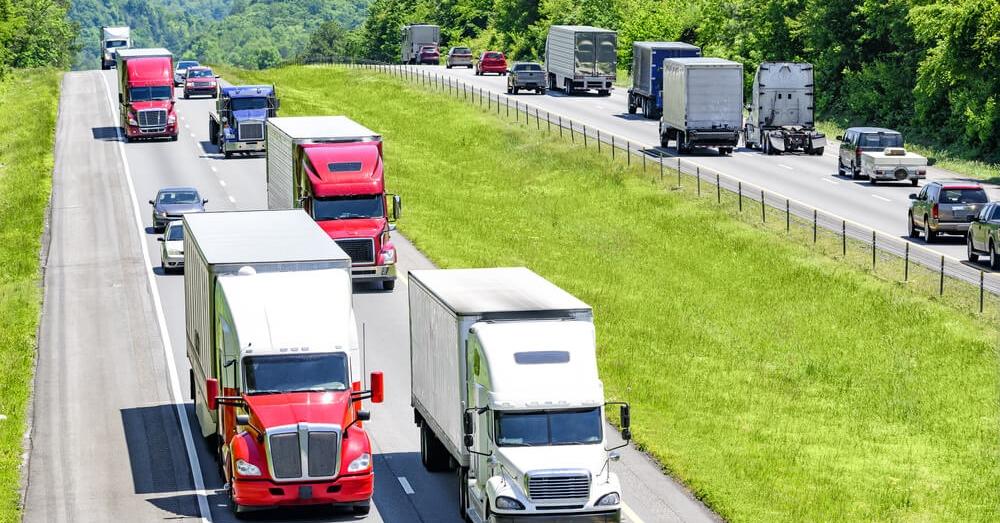Traveling alongside towering 18-wheel trucks can be quite nerve-wracking. These massive vehicles play a vital role in delivering the goods we rely on every day, but they also bring significant safety challenges. Unfortunately, thousands of accidents involving these large trucks occur each year, leaving a devastating impact on families and communities.
However, it’s important to recognize that many of these accidents can be avoided. By being aware of the risks, adopting safe habits, and promoting a culture of shared responsibility, we can confidently navigate the roads we all use, reducing anxiety and enhancing safety.
Understanding the Mechanics of a Truck
Before we delve into safe driving strategies, it’s important to recognize the unique features of 18-wheelers that contribute to safety challenges. These trucks are large and heavy, creating substantial blind spots that cover significant areas around the vehicle and are not visible to drivers. Stopping these trucks takes a considerable distance, sometimes twice as much as a regular car, and their turning maneuvers can be wide and unpredictable. Being aware of these facts is the initial step in safely sharing the road with them.
In addition, the mechanical intricacies of these trucks necessitate responsible maintenance. Regular inspections and adherence to maintenance schedules are essential to prevent breakdowns and potential accidents. Moreover, weather and road conditions can significantly affect how 18-wheelers handle. Heavy rain, snow, or uneven terrain can notably increase stopping distances and reduce traction, requiring extra caution from both truck drivers and other drivers on the road.
Building a Culture of Responsibility
The primary responsibility for safety lies with the truck driver, making their well-being a top priority. Managing fatigue is crucial, and taking sufficient breaks is vital to prevent lapses in judgment. The use of drugs and alcohol is strictly prohibited, and adopting proactive stress reduction techniques can help drivers stay alert and focused on the road.
Adhering to safe driving practices is fundamental to responsible truck operation. Conducting thorough pre-trip inspections ensures that all systems are in proper working order before starting the journey. Following hours-of-service regulations helps prevent accidents caused by driver fatigue. Remaining constantly aware of the surroundings, using mirrors effectively, and employing defensive driving techniques are all critical for anticipating and avoiding potential hazards. Technological advancements, such as electronic logging devices and lane departure warnings, can further enhance driver safety by providing real-time feedback and alerts.
Sharing the Road
The primary responsibility for safety lies with the truck driver, making their well-being a top priority. Managing fatigue is crucial, and taking sufficient breaks is vital to prevent lapses in judgment. The use of drugs and alcohol is strictly prohibited, and adopting proactive stress reduction techniques can help drivers stay alert and focused on the road.
Adhering to safe driving practices is fundamental to responsible truck operation. Conducting thorough pre-trip inspections ensures that all systems are in proper working order before starting the journey. Following hours-of-service regulations helps prevent accidents caused by driver fatigue. Remaining constantly aware of the surroundings, using mirrors effectively, and employing defensive driving techniques are all critical for anticipating and avoiding potential hazards. Technological advancements, such as electronic logging devices and lane departure warnings, can further enhance driver safety by providing real-time feedback and alerts.
Knowing What to Do When Trouble Strikes
Even with our best efforts, accidents can still happen. It’s important to be prepared for emergencies to minimize damage and ensure safety. Truck drivers should know how to handle breakdowns, secure their vehicles, and communicate effectively with emergency responders. Understanding roadside assistance programs and accident reporting procedures can also be incredibly valuable in such situations.
Taking Action for a Safer Future
Achieving safer interactions with 18-wheelers requires a joint effort. According to a truck accident lawyer in San Antonio, educating ourselves and others about the risks and responsibilities involved, we can create a culture of awareness and respect. Truck drivers need to prioritize their well-being and adopt safe driving practices. Other road users must be mindful and responsible when sharing the road with these large vehicles. Together, we can advocate for infrastructure improvements and safety initiatives that benefit everyone.
By embracing this comprehensive approach, we can turn our roads from potential danger zones into safe spaces for trucks, cars, pedestrians, and cyclists alike. Let’s remember that the journey to a safer tomorrow begins with each of us taking informed and responsible actions, one step at a time.
Remember, safety is not a destination; it’s a continuous journey. Let’s commit to making every mile we share on the road a safe and respectful one.

